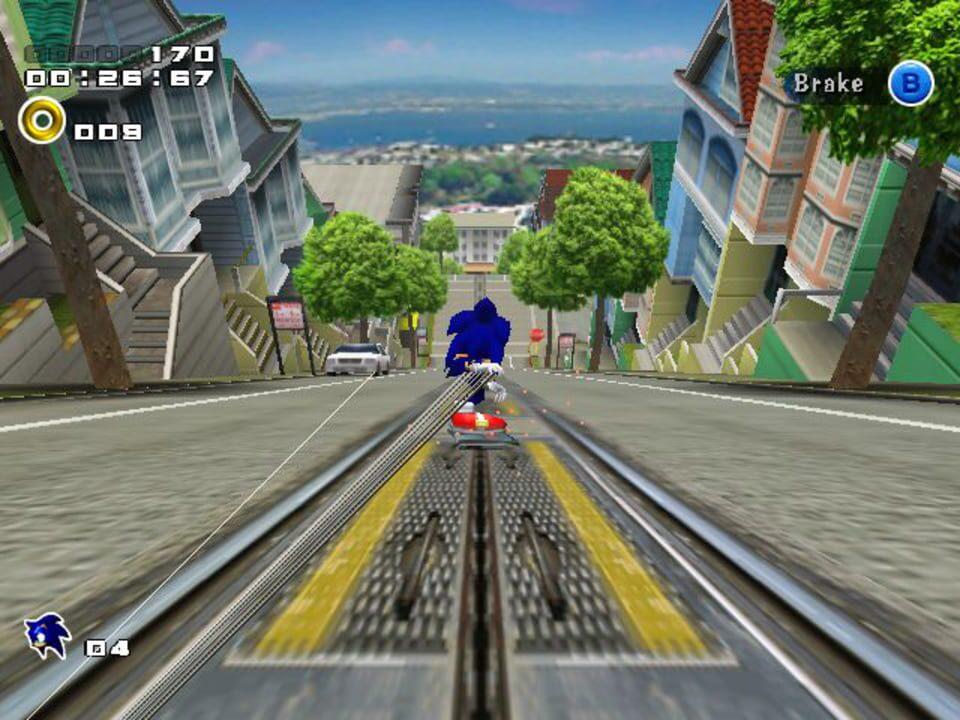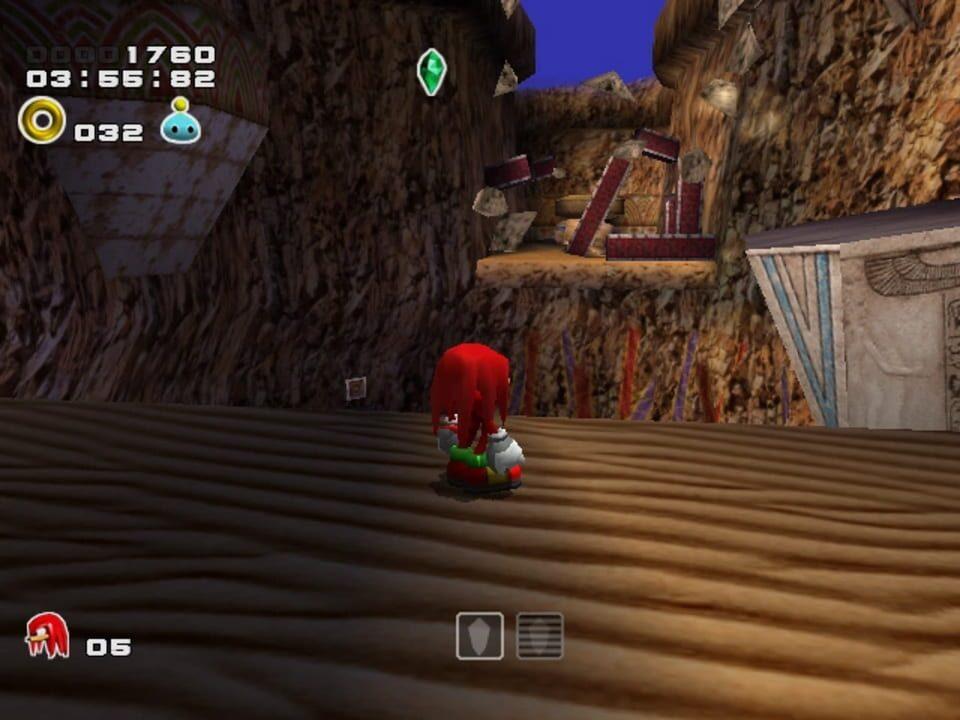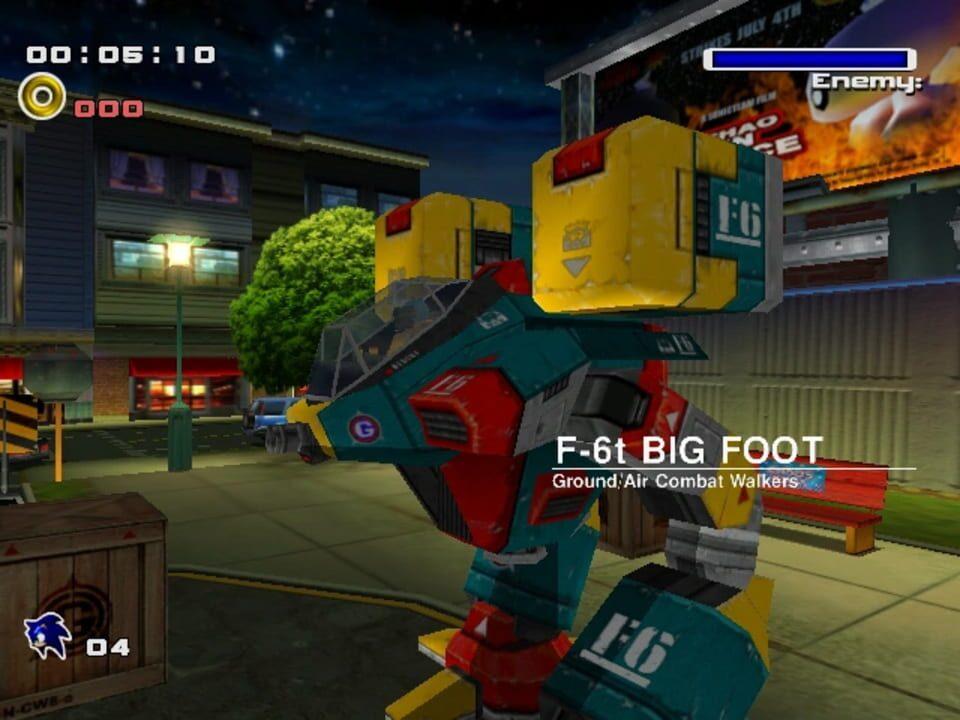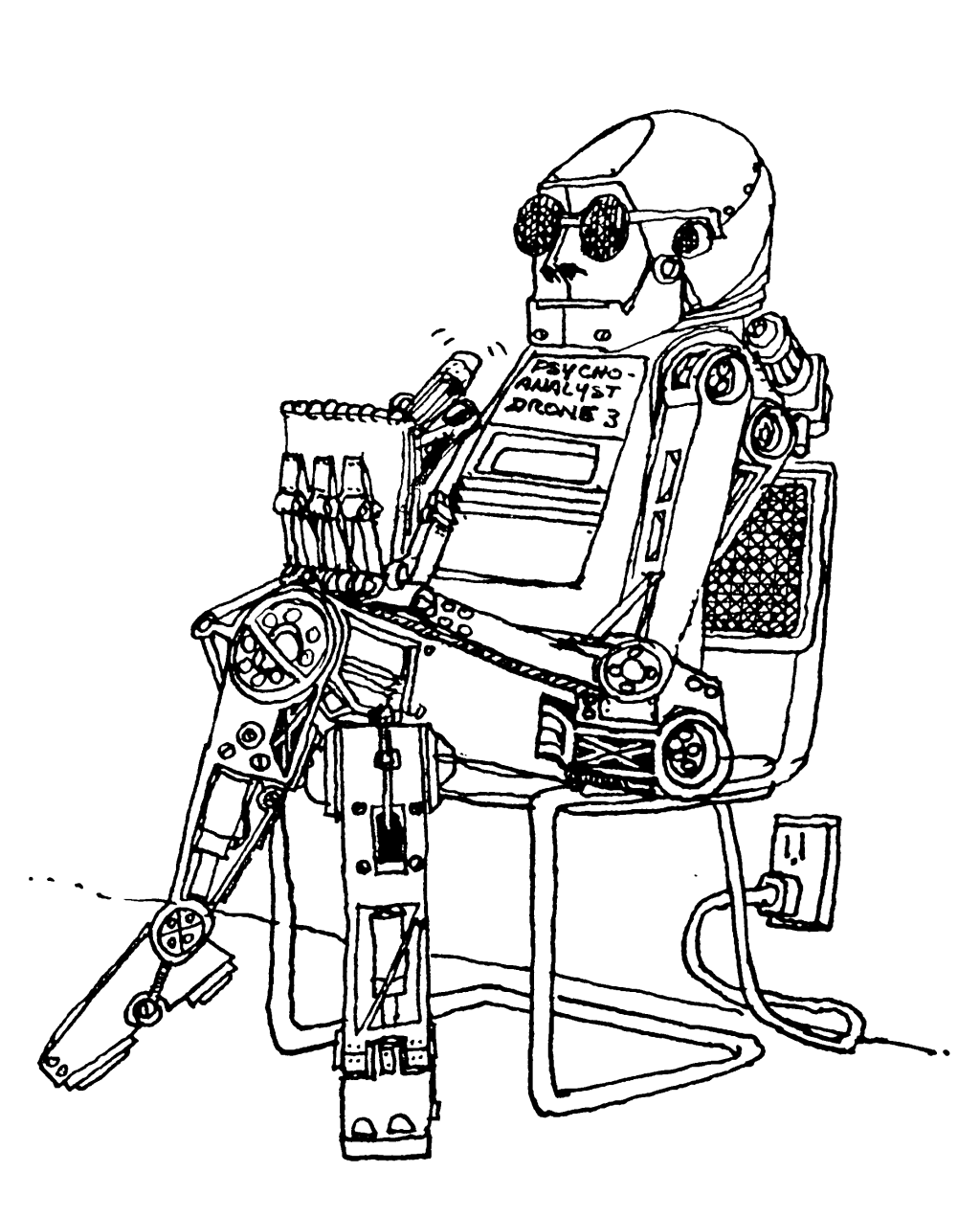phase-3.md updated.
changes:
- WRDPRO.BAS transcription complete.
- started work on converting the various BASIC dialects into Stefan's BASIC
https://git.sr.ht/~vidak/peoples-permacomputer/tree/master/basiclang/stefans-basic/conversions.md
WRDPRO.BAS is about 350 lines of BASIC.
https://git.sr.ht/~vidak/peoples-permacomputer/tree/master/basiclang/text-editors/wrdpro/wrdpro.bas
first practical experiment of the project.
stefan's tinybasic burned to an arduino mega.
not much memory, but from here the user environment of the permacomputer can be developed.
it will not be difficult to get BASIC running on the permacomputer.
It was a simpler time...
https://archive.org/details/commodore-user-magazine-16/page/n19/mode/2up?view=theater

@neauoire do you know anything about the wiki?
does anyone know how i can get an account on the permacomputing wiki?
#permacomputing
https://git.sr.ht/~vidak/peoples-permacomputer/tree/master/results/phase-3.md
phase-3.md updated.
changes:
- UTILITY.BAS added. file operations
- DUMBTERM.BAS added. dumb terminal program.
LED.BAS - Line-Oriented Text Editor
https://git.sr.ht/~vidak/peoples-permacomputer/tree/master/item/basiclang/text-editors/led
L.E.D.
Line-Oriented Text Editor
Arnie Lee
ABACUS SOFTWARE
Published: Compute! Magazine; Feb, 1981.
The LED is a line oriented text editor. The entire source program must be in memory while the user is modifying it. Modifications allowed include appending source to the end of the text, inserting lines of text into the middle of existing text, changing occurance of a character string to another string, and printing the text to a hardcopy device. After creating or modifying the text, the user may then save it onto tape or diskette. Some of the key points to note when using the LED are:
- Each line is numbered;
- Each line can contain up to 80 characters;
- When entering 3 line, the line must be terminated by
RETURNkey; - A maximum of 500 lines of text may be entered (this is subject to the memory capacity of your particular computer);
- As lines arc inserted or deleted from the source program, the remaining lines arc automatically renumbered;
- A line of source may extend more than one screen line on your CRT.
Commands.
The following arc the descriptions of each of the commands:
'F'
Enter FILER portion of LED.
This command allows you to use the LOAD or SAVE commands which arc described below:
'L'
Load file from tape or diskette.
This command allows you to load a previously edited source program. The source program may have been saved on tape or diskette. After keying 'L' the LED will prompt you for the name of the source program. Key in the filename and depress RETURN. Do not key in the suffix .SOURCE. If you decide that you really don't want to load a file, then enter a null line instead of a filename. At this point you will be asked if the file was saved on tape or diskette (for the PET version of LED). Type 'T' or 'D' as appropriate. If the source program is on tape, then you must put the source file tape into cassette #1. For either tape or diskette, the filename that is keyed in must match the filename that is on the storage medium.
'S'
Save file onto tape or diskette.
This command allows you to save the current source program onto tape or diskette. After keying 'S', the LED will prompt you for the name of the file to be saved. Key in the file-name and then depress RETURN. The file-name is limited to twelve characters. The suffix .SOURCE will be added to the filename by the LED. If you decide that you really don't want to save a file, then enter a null line instead of a filename.
At this point you will be asked if you want to save the file onto tape or diskette (for PET version of the LED). Type 'T' or 'D' as appropriate. If the source is to be saved onto tape, then you must put the tape into cassette #1.
* Note that tape is supported only in the PET version.
'A'
Append the end of source.
This command allows you to add lines to the end of the current source program. If you have not loaded any source program, then this command will allow you to create a new source program. You may append one or as many lines as you desire. To signal the end of append mode press RETURN when the cursor is sitting at the first character after the line number prompt (null line).
'C'
Change string.
This command allows you to change an existing string to a new string. It will make changes to either a single line or to a range of lines. Indicate a single line by keying in its line number followed by RETURN. Indicate a range of lines by keying the line number of the first line to be searched followed by '-' and finally followed by the line number of the last line to be searched followed by RETURN. You will then be prompted for the change siring. The format for the changed string is:
+ from-string + to-string +
where:
+ is a delimiter — any character may be used but it must not be contained in cither the from-string or the to-string.
from-string is the string of characters which are to be replaced
to-string is the string of characters which are to replace the from-string in the original source line
e.g. /abc/xyz/
in the above example all occurances of abc will be replaced by xyz.
e.g. /abc//
in the above example all occurances of 'abc' will be eliminated (replaced by nulls).
'D'
Delete line or range.
This command allows you to delete a line or a range of lines from the source program in memory.
DELETE RANGE(LOW,HIGH)-> 80 will delete line 80
DELETE RANGE(LOW,HIGH)-> 80-90
will delete lines 80 thru 90
DELETE RANGE(LOW-HIGH)-> -20
will delete all lines thru 20
'I' insert lines into source program
This command will allow you to insert lines into the c-xisiing source program. LED will prompt you for the line number before which you want to insert the new source statements. You may enter one or as many new lines as you desire. Follow each line with RETURN. To signal the end of INSERT mode press RETURN when the cursor is setting at the first character in the line (null).
'L' list source program
This command allows you to list a line or range of lines.
LIST RANGE(LOW-HIGH)-> 80
will list line 80
LIST RANGE(LOW-HIGH)-> 80-100
will list lines 80 thru 100
LIST RANGE(LOW-HIGH)-> -20
will list all lines thru 20
LIST RANGE(LOW-HIGH)-> NULL
will list all lines
With the LIST command only the following features are available:
PET.
RUN/STOP key - suspends the listing awaiting the depression of the RETURN key.
SPACE BAR - scrolls the listing one line at a time
OFF/RVS key - slows the speeds of the listing
APPLE II.
ESC key - suspends the listing awaiting the depres- sion of the RETURN key.
RETURN key - reverts to normal speed listing after ESC
SPACE BAR - slows the speed of the listing
'M'
Menu display.
This command allows you to sec a more complete explanation of the commands than the abbreviated version which prompts you,
'P'
Print source program.
This command allows you to print a line or range of lines to a hardcopy printer. The PET is supported thru the IEEE interface as device 4. The APPLE II is supported thru slot 2. The range specifications are identical as LIST.
'Q'
Quit LED.
This command allows you to gracefully exit from the LED. The LED gives you a chance to change your mind so that if you accidentally keyed Q, then you will have another opporttmity to save your source file.
'R'
Replace a line.
This command allows you to replace a single line only. After keying in the line number to be replaced, the LED will prompt you with that line number. Key in the replacement text and press return.
e.g.
REPLACE -LINE#-> 108
allows you to replace line 108.
Listing.
The listing which follows is the version of the LED lor the PET/CBM machines. The version for the APPLE II is very similar to the PET/CBM version and runs under APPLESOFT. The major differences between the two versions are in the routines that handle the disk and printer I/O.
0 REM LINE EDITOR (c)1980 ABACUS SOFTWARE
10 DIM T$(500):REM BUFFER SPACE
20 L$="":REM CURRENT LINE
30 LL=1:REM LAST LINE #
40 SP$=" ":DL$=CHR$(20)
50 EE=0:REM DISK ERROR CHANNEL CLOSED
60 PR=0: REM PRINT CHANNEL
90 POKE 144,49:REM DISABLE STOP KEY
100 PRINT " ABACUS SOFTWARE LINE EDITOR"
110 PRINT " FUNCTIONS:"
130 PRINT
140 PRINT TAB(8);"A)PPEND-TO END OF TEXT"
150 PRINT TAB(8);"C)HANGE-STRING"
160 PRINT TAB(8);"D)ELETE LINE(S)"
170 PRINT TAB(8);"F)ILER COMMANDS"
180 PRINT TAB(8);"I)NSERT BEFORE LINE"
190 PRINT TAB(8);"L)IST LINE(S)"
200 PRINT TAB(8);"M)ENU DISPLAY"
210 PRINT TAB(8);"P)RINT LINE(S)"
220 PRINT TAB(8);"Q)UIT LEAVE EDITOR"
230 PRINT TAB(8);"R)EPLACE LINE"
240 PRINT:PRINT " ENTER SELECTION-> ";
250 GOTO 510
500 PRINT:PRINT "ENTER A,C,D,F,I,L,P,Q,R,M)ENU->";
510 GET A$:IF A$="" THEN 510
520 J=0:FOR I=1 TO 10
530 IF A$=MID$("ACDFILRMQP",I,1) THEN J=I:I=10
540 NEXT I
550 PRINT A$
560 IF J=0 THEN 500
570 ON J GOTO 1000,2000,3000,4000,5000,6000,7000,100,8000,9000
1000 PRINT
1005 PRINT "APPEND TO END OF TEXT"
1010 PRINT:PRINT LL ">";
1020 GOSUB 10000:REM GO READ LINE
1030 IF LEN(L$)=0 THEN 500
1040 T$(LL)=L$
1050 LL=LL+1
1060 GOTO 1010
2000 REM CHANGE STRING
2010 PRINT:PRINT "CHANGE";:GOSUB 16000:REM GET RANGE
2020 IF HI=0 THEN 500
2025 PRINT "CHANGE STRING->";:GOSUB 10000:REM GET STRING
2030 L=LEN(L$)
2040 IF L=0 THEN 500
2050 IF L<4 THEN 2000
2060 DM$=LEFT$(L$,1):REM DELIMITER
2070 IF RIGHT$(L$,1)<>DM$ THEN 2000
2080 J=0: FOR I=2 TO L-1
2090 IF MID$(L$,I,1)=DM$ THEN J=I
2100 NEXT I
2110 IF J=0 THEN 2000
2120 IF J=2 THEN 2000
2130 FR$=MID$(L$,2,J-2)
2140 IF J+1=L THEN TS$="":GOTO 2160
2150 TS$=MID$(L$,J+1,L-J-1)
2160 F=LEN(FR$)
2170 FOR I=LO TO HI
2180 T=LEN(T$(I)):S=1:NL$=""
2190 FOR J=1 TO T-F+1
2200 IF MID$(T$(I),J,F)<>FR$ THEN 2230
2210 NL$=NL$+MID$(T$(I),S,J-S)+TS$
2220 S=J+F:J=S-1
2230 NEXT J
2240 IF S<>1 THEN NL$=NL$+RIGHT$(T$(I),T=S+1):T$(I)=NL$
2250 NEXT I
2260 GOTO 500
3000 REM DELETE LINES(S)
3005 PRINT:PRINT "DELETE ";:GOSUB 16000:REM GET RANGE
3010 IF NOT DF THEN 3015:REM NOT DEFAULT ON ENTIRE FILE
3011 PRINT "DELETE ENTIRE FILE? ";
3012 GET A$:IF A$="" THEN 3012
3013 PRINT A$:IF A$="N" THEN 500
3014 IF A$<>"Y" THEN 3011
3015 IF HI>LL-1 THEN 500
3020 IF HI=LL-1 THEN LL=LO:GOTO 500
3030 J=HI-LO+1
3040 FOR I=LO TO LL-J-1
3050 T$(I)=T$(I+J)
3060 NEXT I
3070 LL=LL-(HI-LO)-1
3080 GOTO 500
4000 REM FILER
4010 PRINT "FILER ENTER L)OAD OR S)AVE-> ";
4020 GET A$:IF A$="" THEN 4020
4030 IF A$<>"L" AND A$<>"S" THEN PRINT:GOTO 4000
4040 PRINT A$:M$=A$
4050 PRINT "ENTER FILENAME-> ";
4070 GOSUB 10000
4075 IF LEN(L$)=0 THEN 500
4076 IF LEN(L$)>12 THEN 4050
4080 FI$=L$
4090 PRINT "ENTER D)ISK OR T)APE-> ";
4100 GET A$:IF A$="" THEN 4100
4110 PRINT A$
4120 IF A$<>"D" AND A$<>"T" THEN 4090
4130 IF A$="D" THEN 4160:REM DISK ROUTINES
4140 IF M$="L" THEN 4400
4150 GOTO 4200
4160 DR$="":IF LEFT$(FI$,2)<>"0:" AND LEFT$(FI$,2)<>"1:" THEN DR$="0:"
4170 GOTO 4600
4200 REM TAPE SAVE
4210 IF LL=1 THEN PRINT "NO FILE TO SAVE":GOTO 500
4220 OPEN 2,1,2,FI$+".SOURCE"
4230 FOR I=1 TO LL-1
4230 FOR J=1 TO LEN(T$(I))
4250 PRINT# 2,MID$(T$(I),J,1);
4260 NEXT J
4270 PRINT# 2,CHR$(255);
4280 NEXT I
4290 CLOSE 2
4300 PRINT SPC(6);FI$;" SAVED"
4310 GOTO 500
4400 REM TAPE LOAD
4410 OPEN 2,1,0,FI$+".SOURCE"
4430 IF=L0:REM LINE COUNT
4440 LL=LL+1:T$(LL)=""
4450 GET# 2,A$
4460 IF ST=64 THEN 4500:REM END OF FILE
4465 IF ST<>0 THEN PRINT "*** LOAD ERROR ***":GOTO 500
4470 IF A$=CHR$(255) THEN 4440:REM END OF LINE
4480 T$(LL)=T$(LL)+A$
4490 GOTO 4450
4500 CLOSE 2
4510 PRINT SPC(6);FI$;" LOADED"
4520 LL+LL+1
4530 GOTO 500
4600 REM DISK SAVE
4610 IF M$="L" THEN 4800
4620 IF LL=1 THEN PRINT "NO FILE TO SAVE":GOTO 500
4630 FL$="@0"+DR$+FI$+".SOURCE,S,W"
4640 OPEN 2,8,2,FL$
4650 GOSUB 20000:REM ERROR CHECK
4655 IF E1<>0 THEN 500
4660 FOR I=1 TO LL-1
4670 FOR J=1 TO LEN(T$(I))
4680 PRINT# 2,MID$(T$(I),J,1);
4690 NEXT J
4700 PRINT# 2,CHR$(255);
4710 NEXT I
4720 CLOSE 2
4730 PRINT SPC(6);FI$;" SAVED"
4740 GOTO 500
4800 REM DISK LOAD
4810 FL$=DR$+FI$+".SOURCE,S,R"
4820 OPEN 2,8,2,FL$
4830 GOSUB 20000:REM ERROR CHECK
4835 IF E1<>0 THEN 500
4840 LL=0:REM LINE COUNT
4850 LL=LL+1:T$(LL)=""
4860 GET# 2,A$
4870 IF ST=64 THEN 4500: REM END OF FILE
4880 IF ST<>0 THEN GOSUB 20000:GOTO 500
4890 IF A$=CHR$(255) THEN 4850:REM END OF LINE
4900 T$(LL)=T$(LL)+A$
4910 GOTO 4860
4920 CLOSE 2
4930 PRINT SPC(6);FI$;" LOADED"
4940 LL=LL+1
4950 GOTO 500
5000 REM INSERT LINE
5010 PRINT:PRINT "INSERT BEFORE ";:GOSUB 17000:REM GET LINE #
5015 IF LO>LL OR LO<1 THEN 5000
5020 PRINT:PRINT LO;">";
5030 GOSUB 10000:REM READ LINE
5040 IF LEN(L$)=0 THEN 500
5050 LL=LL+1
5060 FOR I=LL TO LO STEP -1
5070 T$(LO)=L$
5080 NEXT I
5090 T$(LO)=L$
5100 LO=LO+1
5110 GOTO 5020
6000 REM LIST LINES
6010 PRINT:PRINT "LIST ";:GOSUB 16000:REM GET RANGE
6020 IF HI=0 THEN 500
6030 SS$="N":PRINT:FOR I=LO TO HI:REM PERFORM LIST
6040 PRINT I;">";T$(I)
6050 GET A$:OF A$=CHR$(18) THEN FOR J=1 TO 1024:NEXT J
6060 IF A$<>CHR$(3) THEN 6110
6070 SS$="Y"
6080 GET A$:IF A$=CHR$(13) THEN SS$="N":GOTO 6110
6090 IF A$<>CHR$(32) THEN 6070
6100 GOTO 6120
6110 IF SS$="Y" THEN 6070
6120 NEXT I
6130 GOTO 500
7000 REM REPLACE LINE
7010 PRINT:PRINT "REPLACE ";:GOSUB 17000:REM GET LINE #
7020 IF LO>=LL OR LO<1 THEN 7000
7030 PRINT:PRINT LO;">";
7040 GOSUB 10000:REM READ LINE
7050 IF LEN(L$)=0 THEN 500
7060 T$(LO)=L$
7070 GOTO 500
8000 REM QUIT
8010 PRINT:PRINT " LEAVE EDITOR-ARE YOU SURE? ";
8020 GET A$:IF A$="" THEN 8020
8030 PRINT A$
8040 IF A$<>"Y" AND A$<>"N" THEN 8000
8050 IF A$="N" THEN 500
8060 PRINT:PRINT " ** END LINE EDITOR **"
8070 POKE 144,46:REM ENABLE STOP KEY
8080 END
9000 REM PRINT LINE
9010 IF PR=0 THEN PR=4 OPEN PR,PR
9020 PRINT "PRINT ";:GOSUB 16000:REM GET RANGE
9030 IF HI=0 THEN 500
9040 FOR I=LO TO HI:REM PERFORM PRINT
9050 PRINT# PR,I;": ";T$(I)
9060 NEXT I
9070 PRINT# PR
9080 PRINT# PR,"***";LL-1;"LINES IN BUFFER ***"
9090 PRINT #PR
9100 GOTO 500
10000 REM INPUT A LINE OF TEXT
10010 L$=""
10020 PRINT "$<-";
10030 GET A$:IF A$="" THEN 10030
10040 IF A$=CHR$(13) THEN PRINT " ":RETURN
10050 IF LEN(L$)>80 THEN GOTO 15000
10060 IF A$>=SP$ AND A$<=CHR$(95) THEN 10100
10065 IF A$>=CHR$(161) AND A$<=CHR$(223) THEN 10100
10070 IF A$<>DL$ THEN GOTO 10030
10080 IF LEN(L$)>0 THEN PRINT A$;:L$=LEFT$(L$,LEN(L$)-1)
10090 GOTO 10020
10100 L$=L$+A$:PRINT A$;:GOTO 10020
15000 REM LINE INPUT ERROR
15010 PRINT:PRINT "ERROR LINE TRUNCATED"
15020 RETURN
16000 PRINT "RANGE(LOW,HIGH)-> ";
16010 GOSUB 10000:REM INPUT RANGE
16020 LO=1:HI=LL-1:REM DEFAULT LIST ALL
16025 L=LEN(L$)
16030 DF=0:IF L=0 THEN DF=-1:GOTO 16150
16040 J=0:FOR I=1 TO L
16050 A$=MID$(L$,I,1)
16060 IF A$>="0" AND A$<="9" THEN 16090
16070 IF A$="-" THEN J=I:GOTO 16090
16080 J=99:I=99
16090 NEXT I
16100 IF J=99 THEN 16000
16110 IF J=0 THEN LO=VAL(L$):HI=LO:RETURN
16120 IF J>1 THEN LO=VAL(LEFT$(L$,J-1))
16130 IF J<L THEN HI=VAL(RIGHT$(L$,L-J))
16140 IF LO>HI THEN 16000
16150 RETURN
17000 PRINT "-LINE#->";
17010 GOSUB 10000:REM INPUT LINE#
17020 L=LEN(L$)
17030 IF L=0 THEN 17000
17040 J=0
17050 FOR I=1 TO L
17060 A$=MID$(L$,I,1)
17070 IF A$>="0" AND A$<="9" THEN 17090
17080 J=99:I=L
17090 NEXT I
17100 IF J=99 THEN 17000
17110 LO=VAL(L$)
17120 RETURN
20000 IF EE=0 THEN EE=15:OPEN EE,8,EE
20010 INPUT# EE,E1,E2$,E3,E4
20020 IF E1=0 THEN RETURN
20030 PRINT E1;",";E2$;",";E3:",";E4
20040 PRINT "*** DISK ERROR ***"
20050 CLOSE 2
20060 RETURN
https://git.sr.ht/~vidak/peoples-permacomputer/tree/HEAD/results/phase-3.md
# Project phase three - ACTIVE
The hardware platform of the permacomputer is largely settled.
Please see phase-2.md
The permacomputer itself now needs some sort of user operating
environment--a human-computer interface.
The project is opting for the distribution of the software environment
in paradigmatic microcomputer BASIC.
The various utilities and tools will be printed as code listings.
The archival quality of paper is many orders of magnitude better than
hard disks, CD-ROMs, or other digital mediums.
https://github.com/slviajero/tinybasic
Please find below the transcriptions of the type-in listings of the
absolute minimum variety of tools and utilities a user will require to
operate their permacomputer.
It will take some time to render them into BASIC that the above github
repo tinybasic will accept.
## A text editor.
### L.E.D.
See `L.E.D.` [README].
- Transcription complete.
- CBM PET/Apple II BASIC.
- < 300 lines of code.
### VIC EDITYPE
See `VIC EDITYPE` [DIRECTORY].
- Transcription not started.
- Commodore BASIC V2.
### Scriptor
See `Scriptor` [DIRECTORY].
- Transcription not started.
- Atari 400/800 (32K, 40K recommended).
## A telnet client.
Research not started.
## A gopher browser.
Research not started.
Enail (v.): To drive the point home online.
With the discovery of what I thought were mythical--type in BASIC text file editors @ ~300 lines of code--I think the permacomputer project is settling.
If it can run BASIC, it can run our shit.
Looking at you, busted ancient microwave oven...
type-in text editor programs
https://git.sr.ht/~vidak/peoples-permacomputer/tree/master/item/basiclang/text-editors
something special.
please find uploaded images of type-in BASIC listings of text editors.
they come from Compute! magazine issues feb 1981, and apr 1983.
https://archive.org/details/1981-02-compute-magazine
https://archive.org/details/1983-04-compute-magazine/
in the folder are:
- LED - Line-Oriented Text Editor
- VIC EDITYPE
- Scriptor
also included for reference is a machine-language type-in:
- Speed Script
---
imagine travelling long distances in a solarpunk world, with your text editor copied out on a piece of paper
sensitive media
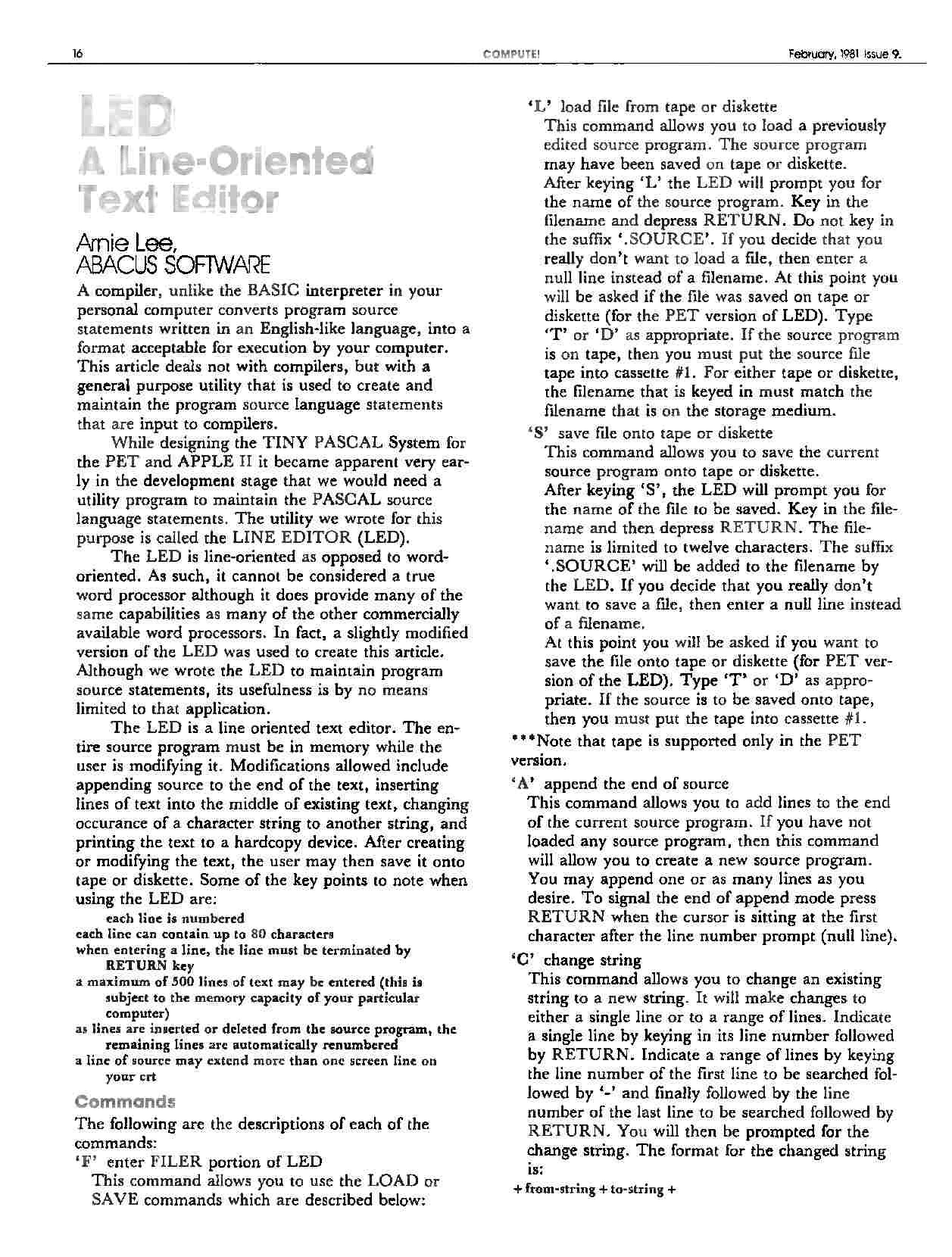
sensitive media
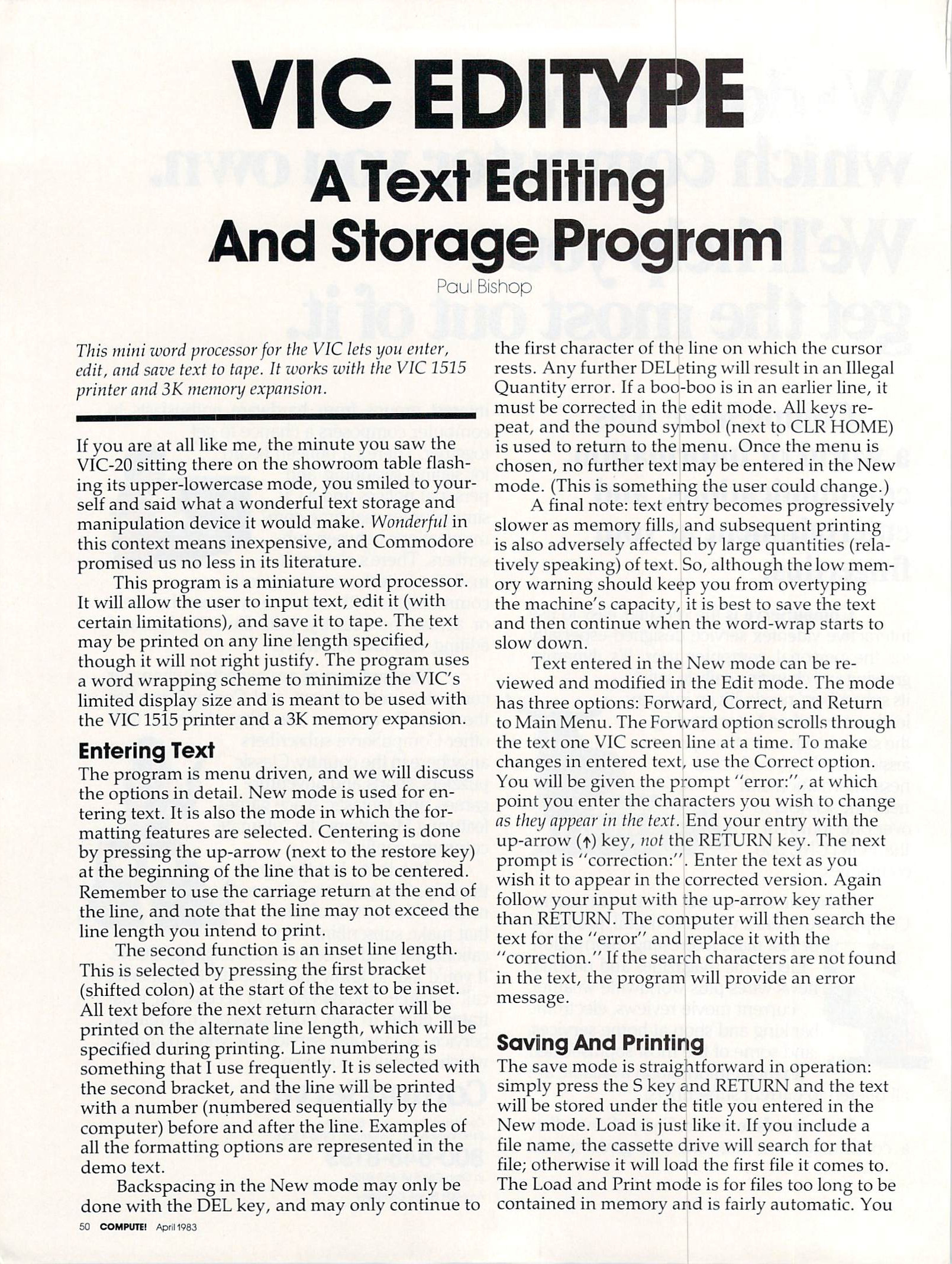
sensitive media
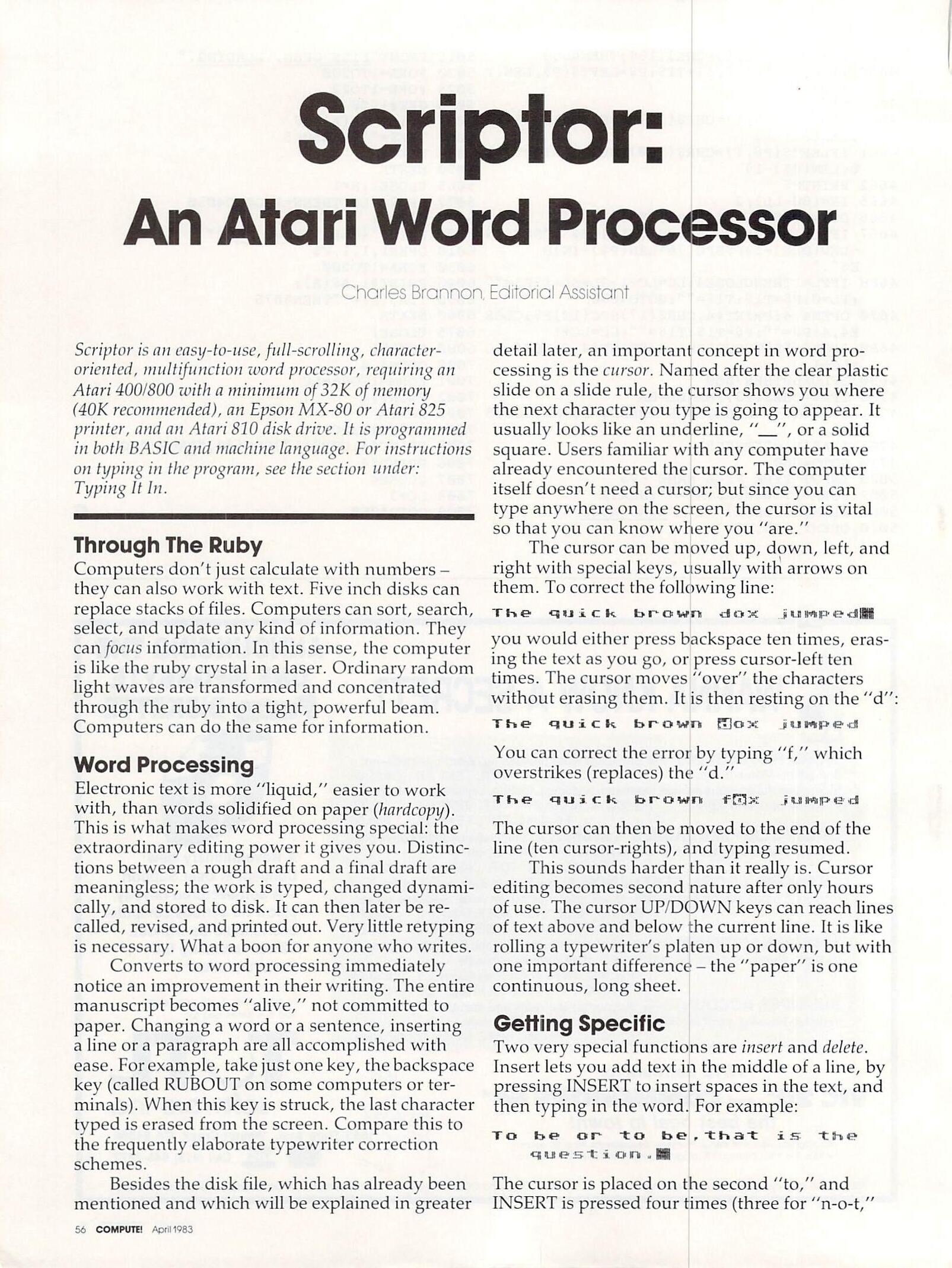
sensitive media
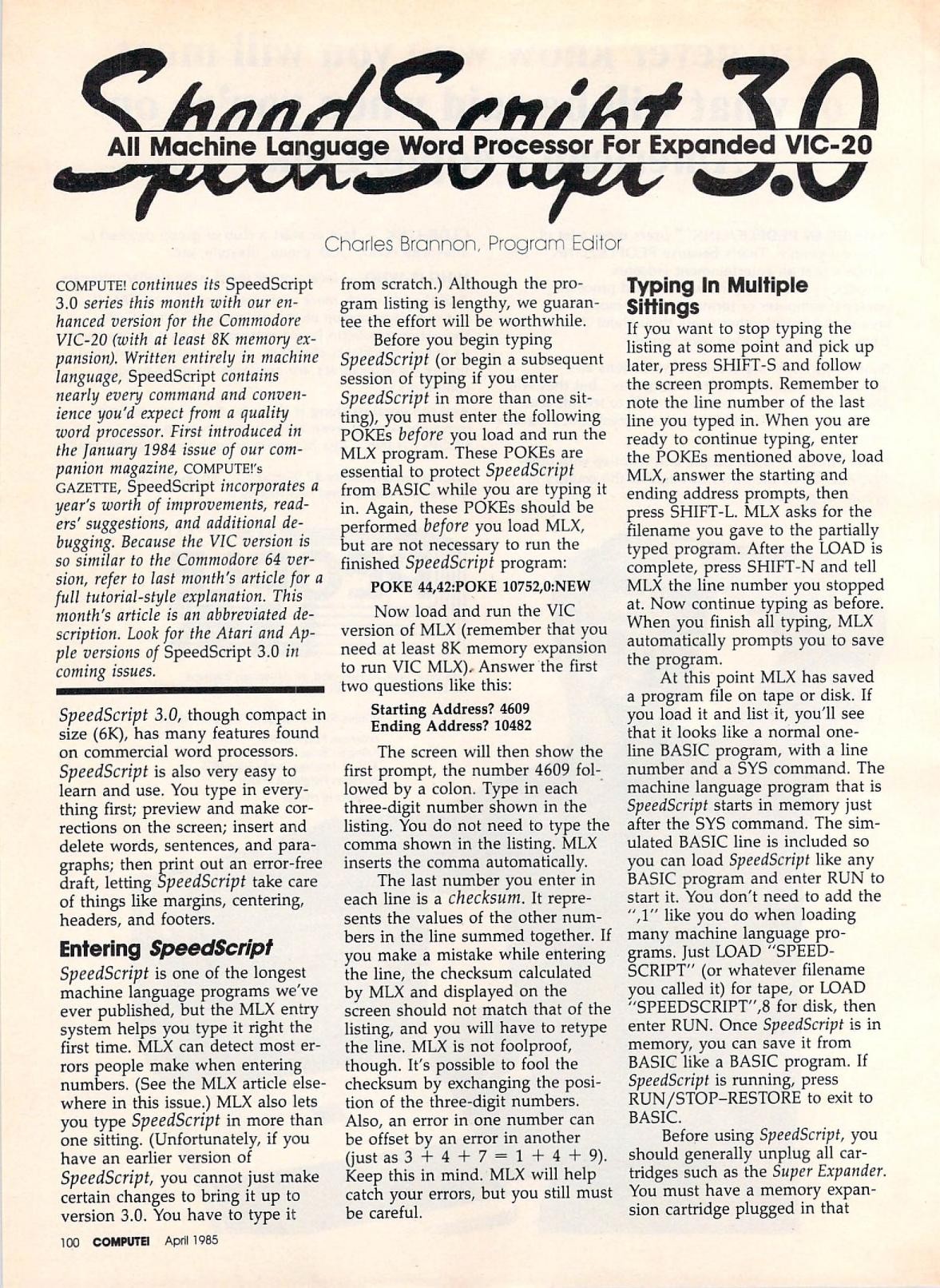
https://vidakovich.itch.io/corralbas
CORRAL
CORRAL is a game program inspired by Harry (short for Aragon), a horse acquired in a rash moment of indulgence for a teen-age daughter. Harry, in his own inimitable style, taught us much about the care, feeding and psychology of the equine species. Some of that hard-won psychology has found its way into CORRAL, which is a one-dimensional simulation of the two- (and almost three-) dimensional problem of catching Harry for anything other than food. The main reason for confining Harry’s alter ego in the computer to only one dimension is simply to conserve paper on hard-copy terminals. Even so, the presentation is very effective on a video display unit.
The corral itself is bounded by a pair of side-rails represented by upper-case I characters separated by 21 spaces. The cowboy C always enters beside the leftmost rail while the horse H is happily mooching somewhere between positions 1 and 1 8 with a bias towards the right. This bias and the various other behavioral peculiarities of the horse are governed by two data matrices (statements 90 and 100) which may be altered to vary the beast’s temperament from wild to docile depending on the data distribution.
If the horse bolts, a check is made (line 450) to ensure that it does not reach a position less than one space away from the cowboy. Occasionally, the horse bolts to a position more advantageous to the cowboy, just as in real life, but usually the opposite is true, particularly when it bolts as a result of an incautious approach by the cowboy. So heed with care the advice for the cowboy not to advance by more than half the separation in any one move except when adjacent to the horse, of course!
The probability that the horse may kick when the cowboy moves close is set by the IF statement at line 500. The cowboy is immobilized for from one to five moves, while the horse canters happily away from the scene of his triumph. If this happens more than a certain (random) number of times the round-up is terminated by the departure of the cowboy in an ambulance.
Occasionally the horse decides to engage in a friendly dance around the cowboy, but remember that random number generators have no soul and the result is often vile treachery as the horse delivers a fatal kick at the very moment when a successful catch seems assured. On the other hand, the skill of an accomplished CORRAL cowboy can result in a catch within three moves with no injuries sustained. You either have it or you have not, as the saying goes. In the latter case the program allows a maximum of 100 moves before relegating the luckless cowboy to cookhouse chores.
Computer freaks with multi-color graphics will no doubt be dissatisfied with such prosaic symbols as H and C for the horse and cowboy. A fully animated CORRAL in living color (with sound effects by a music or speech synthesizer— a talking horse yet!) should not be too difficult to achieve.
Program and description are by Colin Keay.

